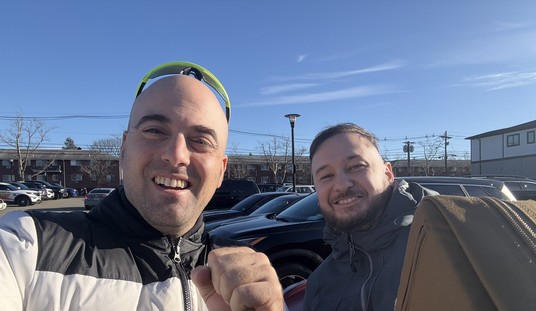For the third time this year the Supreme Court has rejected a case dealing with the ATF’s administratively imposed ban on bump stocks, denying cert in a challenge to the ban brought by a group of federally licensed firearm retailers and several individuals who argued that the ban was an unconstitutional violation of the Fifth Amendment’s Takings Clause by forcing existing bump stock owners to destroy them without any kind of compensation on the part of the federal government.
Today’s decision follows the denial of two other challenges to the bump stock ban, which was imposed by the Trump administration following the Route 91 Harvest music festival shooting in Las Vegas in 2017. Previously, the ATF had determined that bump stocks should not be considered “machine guns” under federal law, given that even with bump stocks attached it took a pull of the trigger to release a single round.
The Bureau of Alcohol, Tobacco, Firearms and Explosives (ATF), a U.S. Justice Department agency, reversed a previous conclusion and classified bump stocks as machine guns under a 1934 U.S. law called the National Firearms Act. The policy took effect in 2019.
Two sets of plaintiffs filed lawsuits seeking compensation for having to destroy or surrender their bump stocks in the Court of Federal Claims, which hears monetary claims against the U.S. government. A judge dismissed the actions, finding the policy to be a lawful exercise of the federal government’s power to outlaw dangers to public health and safety.
The Washington-based U.S. Court of Appeals for the Federal Circuit upheld those decisions last year for a different reason, ruling that a property right in the devices was inherently limited given the existing federal prohibition on machine guns.
We don’t know why SCOTUS rejected these challenges, just that there weren’t four justices willing to accept any of these cases. And while the odds of any particular case being granted cert by the Court are low (about 1-in-10,000), gun owners are rightfully going to be concerned about the Court’s inaction, especially with the Biden administration using the Trump tactic to pursue administrative bans against unfinished frames and receivers, pistol stabilizing braces, and potentially even semi-automatic handguns and rifles. Today’s decision doesn’t mean that these same justices will stand by and let future abuses of executive authority slide, but as long as SCOTUS doesn’t object the Biden administration is likely to take their silence as a green light for more rule-making of dubious constitutionality.
The other case turned away by the Supreme Court today dealt with the seizure of a New York man’s firearms; a case that the attorneys for Wayne Torcivia argued was virtually identical to a similar search and seizure that the Court ruled unconstitutional in Caniglia v. Strom.
… the Second Circuit allowed a warrantless search of Petitioner’s home and seizure of his lawfully owned firearms by invoking a supposed “special-needs exception” to the Fourth Amendment’s warrant requirement. And the Second Circuit justified the entry into Petitioner’s home even though Petitioner was accused of no crime, Pet. App. 25a, the search and seizure occurred well after Petitioner had been removed from his home and from any possible access to those firearms, and even though the Second Circuit assumed—on the summary judgment record—that the firearms were seized “after the responsible physicians had decided that he was not a danger to himself” or others.
In fact, the special-needs exception previously recognized by this Court has been limited to circumstances where the government already has some preexisting level of heightened penal authority over the homeowner, such as with probationers or parolees. E.g., Griffin v. Wisconsin, 483 U.S. 868, 873- 874 (1987) (probationer); Samson v. California, 547 U.S. 843 (2006) (parolee). Expanding that limited exception to include the broader ground covered by the rejected “community caretaking” exception both blatantly disrespects this Court’s decision in Caniglia and deepens a pre-Caniglia split—between the Fourth, Fifth, and Tenth Circuits and the New Jersey Supreme Court on the one hand and the First, Second, and Ninth Circuits on the other—about when the special-needs exception applies.
Indeed, this case is a strong candidate for summary reversal given its utter disdain for this Court’s recent Caniglia decision rejecting a warrantless search on nearly identical facts. In the process, the Second Circuit has not only exacerbated a pre-existing split, but it has also created “a new permission slip” for warrantless home entry that is foreclosed by this Court’s precedents.
Given the split among the circuits as well as the Supreme Court’s own decision in Caniglia, I’m surprised that SCOTUS didn’t at least grant cert, vacate the Second Circuit’s decision, and remand the case back to lower courts in light of the precedent set in Caniglia. Instead, the Court without comment denied cert, despite arguments from plaintiffs’ attorneys that the Second Circuit was doing an end run around SCOTUS.
In this case, rather than simply apply this Court’s holding in Caniglia, the Second Circuit rebranded the community-caretaking exception by turning to another exception—dubbed the “special-needs” exception—and grossly expanded it to cover the very ground of warrantless searches fenced off by Caniglia. The special-needs exception had previously developed in relation to persons—such as parolees and probationers—already under the ongoing supervisory authority of the government in lieu of incarceration. Griffin v. Wisconsin, 483 U.S. 868, 873-874 (1987). But this Court has never endorsed it as an exception to the Fourth Amendment for the homes of persons not already subject to penal custody or supervision.
Wayne Torcivia wasn’t a parolee or under police supervision when authorities were called to his home on the morning of April 6, 2014 by Torcivia’s teenage daughter, who complained to police that her dad was “yelling at her and acting weird.” When police responded, they found no evidence of any crime or wrondoing on Torcivia’s account… at least not at first.
At one point in the discussion between Petitioner and one of the officers, the officer “turned slightly” and accidently dislodged magnetic drapes attached to the front door… As Petitioner went to pick them up… the officer “screamed” very loudly to Petitioner to get back and threatened to tase Petitioner if he did not.
…Petitioner maintains that he told the officer not to tase him, because he has “a heart condition” and “could die.” The officers understood Petitioner’s request not to be tased as the precise opposite, that is, as a supposed desire to die from tasing. In response, they handcuffed Petitioner and transported him to Stony Brook Hospital’s Comprehensive Psychiatric Evaluation Program (CPEP) for an emergency mental health evaluation. Before leaving the home, two of the officers informed Mrs. Torcivia that they had responded to the daughter’s complaint, that Petitioner was acting “irrational,” and that they planned to transport him for a mental-health evaluation.
Without asking whether the Torcivia family had firearms in the home, each officer then left. Only after dropping Petitioner off at CPEP did Officer James Adler learn, via a computer check, that Petitioner held a New York State pistol license.That check was based on a Department policy requiring the seizure of all guns from a home when police respond to a domestic “incident” and a resident is transported to a comprehensive psychiatric emergency program.
Accordingly, the officer contacted his sergeant, who instructed him to ask Mrs. Torcivia for the guns and, if unsuccessful, return to CPEP to seek consent to the seizure from Petitioner; each attempt failed. The police did not seek a warrant for Petitioner’s firearms and no officer was posted at the home to secure the scene pending seizure of the firearms.
Here’s where it gets truly bizarre. Despite the fact that the mental health evaluation found that Torcivia posed no threat to himself or others, the hospital refused to release him until and unless he provided the combination to his gun safe and allowed police to confiscate his firearms.
Though Petitioner at first refused (again) to give the combination, he eventually caved to the pressure resulting from his continued confinement and provided the combination to his wife, who produced Petitioner’s handguns and long guns for the Department when they arrived without a warrant.
Hours after his evaluation cleared him of posing any risk, and only after confirming that the Department had seized his firearms, Petitioner was allowed to exit the locked CPEP Unit.
This was back in 2014, and Torcivia was never able to recover his handguns, despite the fact that he never had his pistol license revoked. It took him two years to recover the long guns that were confiscated from his home without a warrant, and even then he had to jump through all kinds of bureaucratic hoops to get them back.
If the Court isn’t going to smack down this type of warrantless seizure of firearms, New York Gov. Kathy Hochul and her anti-gun allies will be more than happy to exploit the court’s silence and encourage more departments to engage in similar behavior… and sadly some of them will eagerly agree. This may be the first case in New York dealing with the warrantless seizure of a legally-owned firearms collection, but given the Court’s inaction I’m pretty sure it’s not going to be the last.









Join the conversation as a VIP Member